 |
 |
 |
| |
More Comorbidities With NAFLD/NASH Than Hepatitis in Global Survey
|
| |
| |
EASL 2020, Digital International Liver Congress, August 27-29, 2020
Mark Mascolini
People with nonalcoholic fatty liver disease (NAFLD) or nonalcoholic steatohepatitis (NASH) endure more comorbidities and impaired patient-reported outcomes than people with chronic viral hepatitis (CVH), according to results of a 7753-person survey in 18 countries across the world [1]. For many clinical variables, results were worst in Eastern Europe and best in South or Southeast Asia.
With NAFLD growing as a cause of chronic liver disease across the world, the Global NAFLD/NASH Registry is enrolling and collecting data on patients seen in practice in 18 countries representing 6 Global Burden of Disease super-regions. An international team compared findings on comorbidities and patient-related outcomes of NAFLD/NASH patients with those of patients afflicted with CVH.
The analysis involved 4250 people with NAFLD/NASH and 3503 with CVH. People with NAFLD/NASH averaged 50.6 years in age and 35.7 kgm2 in body mass index (BMI). Most of this group was white (61%) and enrolled in high-income super-regions (59%), and about half (49%) had a job.
Compared with 3503 CVH participants, the NAFLD/NASH group had a higher proportion of women (55% vs 48%), higher BMI (35.7 vs 27.1 kg/m2), and higher proportions with components of the metabolic syndrome: diabetes (37.2% vs 12.9%), hypertension (53% vs 25.4%), and hyperlipidemia (52.3% vs 12.3%). Compared with CVH participants, those with NAFLD/NASH were more likely to have depression (20% vs 13%) and clinically overt fatigue (35% vs 27%) but less likely to have cirrhosis (8% vs 14%) (P < 0.001 for all comparisons).
Patient-reported outcome (PRO) scores for people with NAFLD/NASH were significantly more impaired in all domains of FACIT-F (Functional Assessment of Chronic Illness Therapy) and CLDQ (Chronic Liver Disease Questionnaire) (P < 0.05 for all; all but one P < 0.01). The NAFLD/NASH group had the greatest impairment in Social Well-Being on FACIT-F and Activity/Energy, Abdominal Symptoms, Fatigue, and Systemic Symptoms on CLDQ.
Most surveyed people lived in High-Income Global Burden of Disease super-regions (59%), while 14% lived in North Africa and the Middle East, 12% in Southeast Asia, 8% in Latin America and the Caribbean, 4% in Eastern Europe, and 3% in South Asia. Participants were oldest in Eastern Europe (average 55.3 years) and youngest in South Asia (44.2 years), and Eastern Europe had the lowest proportion of males (25.9%), while Southeast Asia had the highest (61.7%).
Eastern Europe and South Asia represented the high and low ends of ranges for average body mass index (41.7 vs 26.8 kg/m2), hypertension (90.4% vs 27.4%), and hyperlipidemia (82.5% vs 25.9%). Rates of depression, anxiety, and fatigue were highest in Eastern Europe and lowest in Southeast Asia (all P < 0.0001). South Asia had the highest cirrhosis rate (13%), while Eastern Europe had the lowest (1%) (P < 0.0001).
Eastern Europe, Latin America, and North Africa/Middle East reported the lowest (worst) Chronic Liver Disease Questionnaire (CLDQ)-NASH total scores, while Southeast Asia and South Asia reported the highest (best) scores.
The researchers conclude that people with NAFLD/NASH have more comorbidities and impaired patient-reported outcomes than people with CVH across the globe in real-world practices. Rates of comorbidities and patient-reported outcomes are particularly high in Eastern Europe.
Reference
1. Younossi Z, Yilmaz Y, Yu ML, et al. The clinical and patient reported outcomes (PROs) profile of patients with non-alcoholic fatty liver disease (NAFLD) from real-world practices varies across the world. EASL 2020, Digital International Liver Congress, August 27-29, 2020. Abstract AS162.
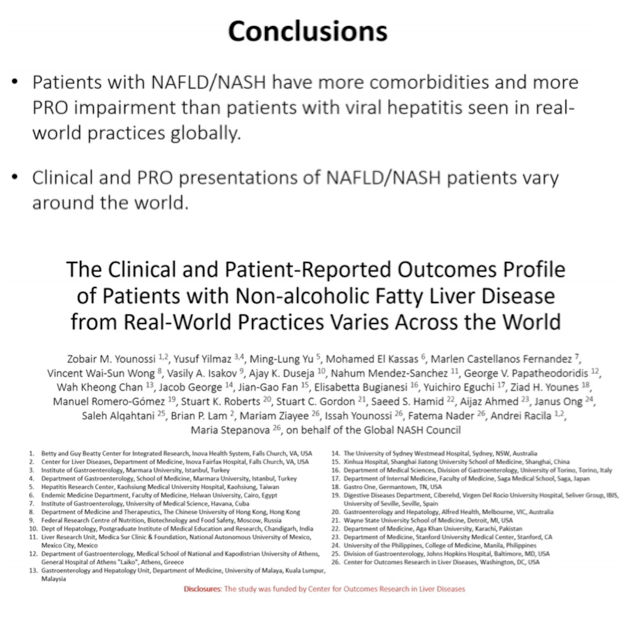

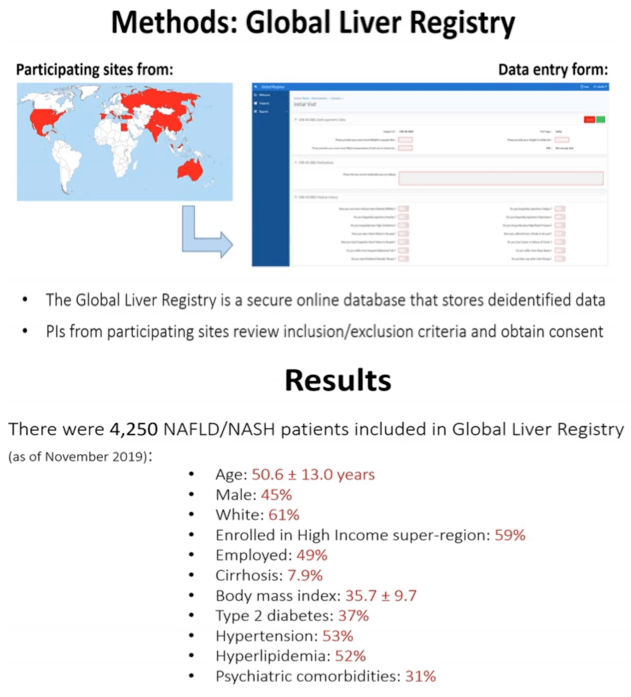
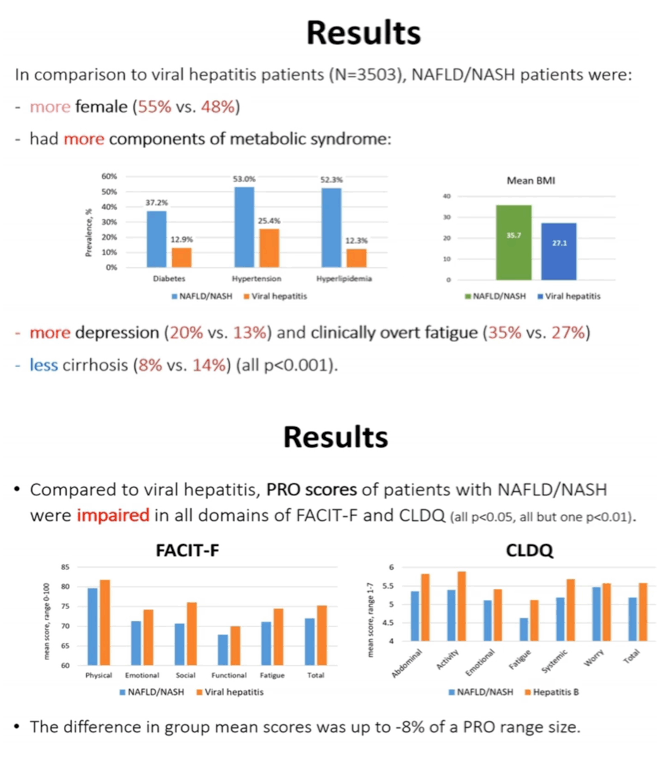
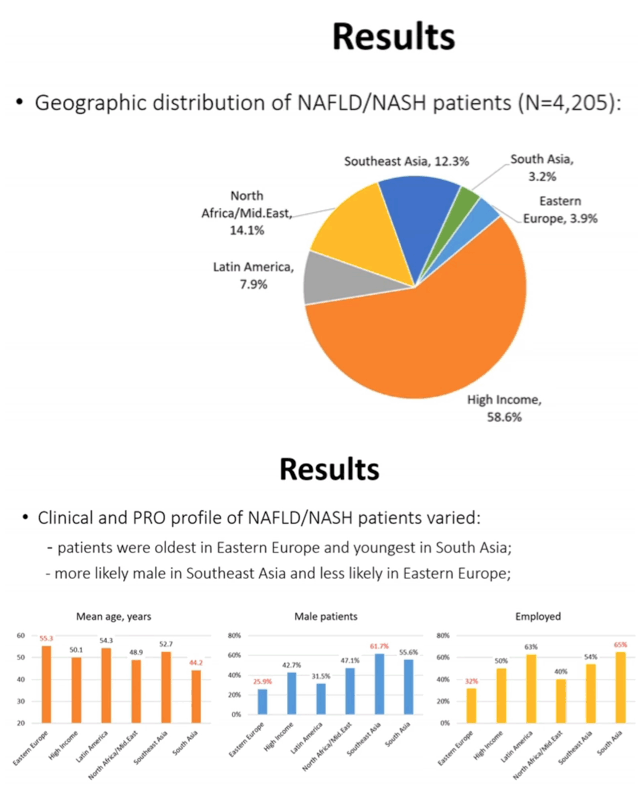
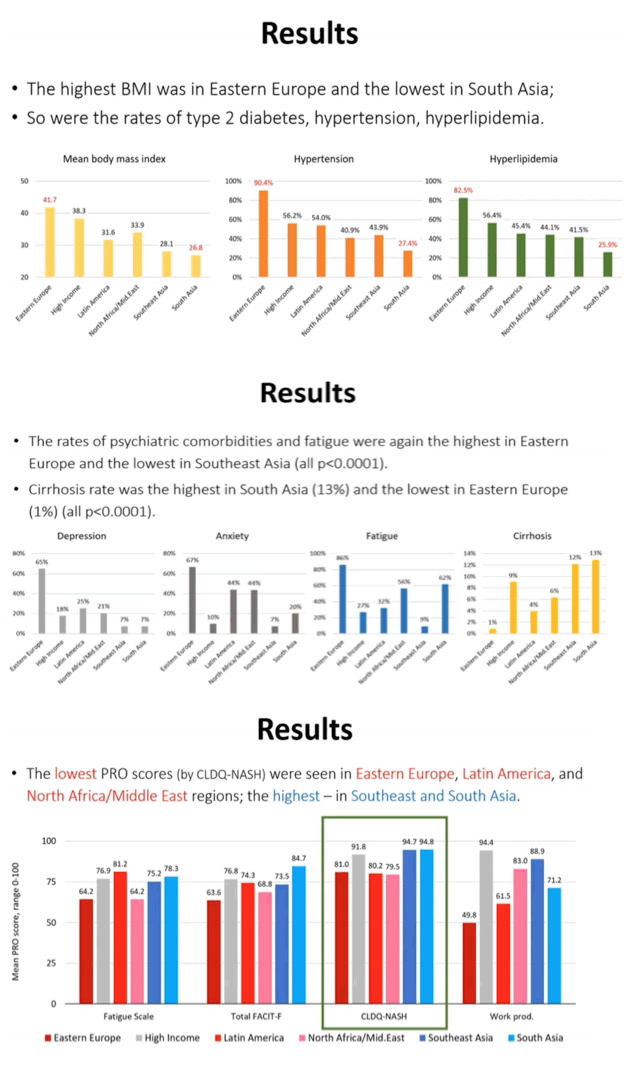
|
| |
|
 |
 |
|
|